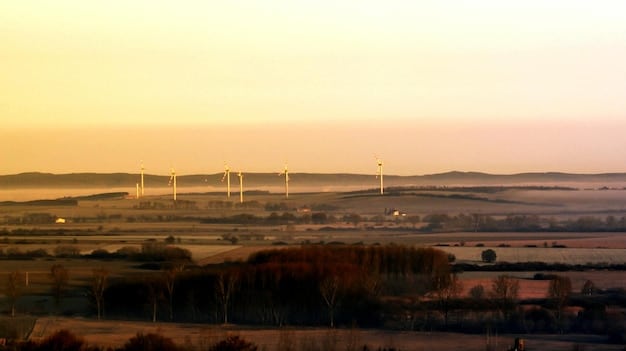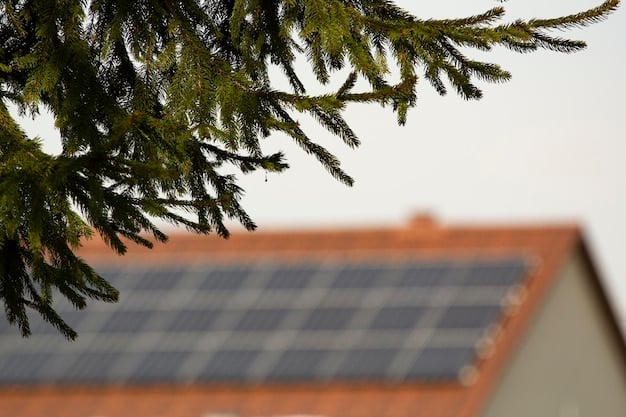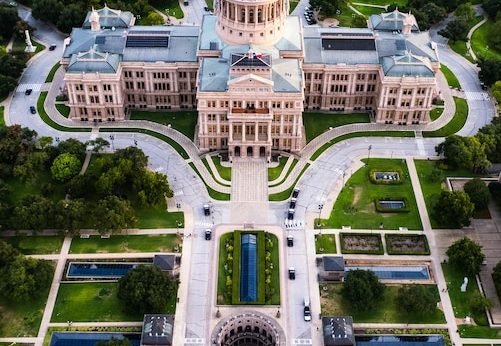White House Announces New Strategy to Address Climate Change – Key Highlights: The Biden administration has unveiled a comprehensive strategy to tackle climate change, focusing on clean energy investments, reducing emissions, and promoting environmental justice, aiming for a carbon pollution-free energy sector by 2035.
The White House Announces New Strategy to Address Climate Change – Key Highlights a comprehensive plan aimed at significantly reducing emissions and investing in a sustainable future. This strategy outlines key initiatives and goals that will impact various sectors of the U.S. economy and daily life.
Understanding the White House’s Climate Change Strategy
The Biden administration’s climate strategy represents a pivotal moment in the fight against climate change. It encompasses a wide array of policies and initiatives designed to reduce greenhouse gas emissions, promote clean energy, and enhance resilience to climate impacts.
Core Objectives of the Strategy
At the heart of the strategy are several core objectives aimed at achieving a carbon pollution-free energy sector by 2035 and a net-zero emissions economy by 2050. These objectives are ambitious and require significant investments and policy changes.
Key Areas of Focus
The strategy focuses on key areas such as clean energy, transportation, infrastructure, and environmental justice. Each area has specific targets and initiatives designed to contribute to the overall climate goals.
- Investing in renewable energy sources like solar, wind, and hydropower.
- Promoting energy efficiency in buildings and industries.
- Developing sustainable transportation systems, including electric vehicles.
- Ensuring that climate policies benefit all communities, especially those disproportionately affected by pollution.
This comprehensive approach aims to create a sustainable and equitable future for all Americans. The administration is committed to working with Congress, businesses, and communities to achieve these ambitious goals.

Investing in Clean Energy Solutions
A cornerstone of the White House’s climate strategy is a massive investment in clean energy solutions. This includes expanding renewable energy production, modernizing the electric grid, and developing new technologies to reduce emissions.
Expanding Renewable Energy
The strategy calls for a significant increase in the deployment of renewable energy sources like solar, wind, and geothermal. This will require overcoming barriers to renewable energy development and creating incentives for private investment.
Modernizing the Electric Grid
A modern and resilient electric grid is essential for delivering clean energy to homes and businesses. The strategy includes investments in grid infrastructure and technologies like energy storage to ensure reliable power delivery.
Promoting Energy Efficiency
Improving energy efficiency is a cost-effective way to reduce emissions and save consumers money. The strategy includes initiatives to promote energy-efficient buildings, appliances, and industrial processes.
- Providing tax credits and rebates for energy-efficient upgrades.
- Setting stricter energy efficiency standards for new buildings and appliances.
- Investing in research and development of new energy-efficient technologies.
- Supporting state and local energy efficiency programs.
These investments in clean energy will not only reduce emissions but also create new jobs and economic opportunities across the country. The administration is committed to ensuring that these benefits are shared by all communities.
Reducing Emissions Across All Sectors
The White House’s climate strategy recognizes that reducing emissions requires a comprehensive approach that addresses all sectors of the economy. This includes transportation, industry, agriculture, and buildings.
Decarbonizing the Transportation Sector
The transportation sector is a major source of greenhouse gas emissions. The strategy aims to accelerate the adoption of electric vehicles, promote sustainable transportation options, and reduce emissions from aviation and shipping.
Reducing Industrial Emissions
Industrial facilities are also significant emitters of greenhouse gases. The strategy includes initiatives to promote energy efficiency, deploy carbon capture technologies, and develop low-carbon industrial processes.
Enhancing Carbon Sequestration
Carbon sequestration, through natural and technological means, plays a crucial role in reducing atmospheric carbon dioxide levels. The strategy supports efforts to enhance carbon storage in forests, soils, and geological formations.

Promoting Environmental Justice and Equity
A key priority of the White House’s climate strategy is to ensure that climate policies benefit all communities, especially those that have been disproportionately affected by pollution and climate impacts. This includes addressing environmental injustices and promoting equity in climate solutions.
Addressing Environmental Injustices
Many low-income communities and communities of color bear a disproportionate burden of pollution and environmental hazards. The strategy includes initiatives to clean up polluted sites, reduce exposure to harmful chemicals, and improve air and water quality in these communities.
Promoting Equity in Climate Solutions
The strategy also aims to ensure that climate solutions benefit all communities, including those that have historically been excluded from economic opportunities. This includes investing in job training and clean energy projects in underserved areas.
- Establishing a White House Environmental Justice Advisory Council.
- Directing federal agencies to prioritize environmental justice in their decision-making.
- Increasing funding for environmental justice programs.
- Engaging with communities to develop climate solutions that meet their needs.
By prioritizing environmental justice and equity, the White House’s climate strategy aims to create a more just and sustainable future for all Americans. This approach recognizes that climate change is not just an environmental issue but also a social and economic one.
The Role of International Cooperation
Climate change is a global challenge that requires international cooperation. The White House’s climate strategy recognizes the importance of working with other countries to reduce emissions, share best practices, and mobilize climate finance.
Rejoining the Paris Agreement
One of the first actions taken by the Biden administration was to rejoin the Paris Agreement, a landmark international accord aimed at limiting global warming. This signaled a renewed commitment to international cooperation on climate change.
Leading by Example
The U.S. is committed to leading by example by setting ambitious climate targets and investing in clean energy solutions. This will encourage other countries to increase their climate ambition and accelerate the global transition to a low-carbon economy.
Mobilizing Climate Finance
The strategy also calls for mobilizing climate finance to help developing countries reduce emissions and adapt to climate impacts. This includes providing financial assistance for clean energy projects, resilience-building measures, and technology transfer.
Challenges and Opportunities Ahead
Implementing the White House’s climate strategy will not be easy. There are significant challenges to overcome, including political opposition, technological hurdles, and economic constraints. However, there are also tremendous opportunities to create a cleaner, more sustainable, and more equitable future.
Political Opposition
One of the biggest challenges facing the climate strategy is political opposition from those who oppose climate action or have vested interests in fossil fuels. Overcoming this opposition will require strong public support and bipartisan collaboration.
Technological Hurdles
Achieving the ambitious climate targets will require technological breakthroughs in areas like carbon capture, energy storage, and electric vehicle batteries. Investing in research and development is essential to overcome these hurdles.
Economic Constraints
Implementing the climate strategy will require significant investments, which could strain government budgets and increase costs for consumers and businesses. It is important to find cost-effective solutions and ensure that the economic benefits of climate action are widely shared.
| Key Point | Brief Description |
|---|---|
| ⚡ Clean Energy Investment | Focus on solar, wind, and energy efficiency to reduce emissions. |
| 🚗 Electric Vehicle Adoption | Promoting electric vehicles to reduce reliance on fossil fuels. |
| 🌍 International Cooperation | Working with other nations to achieve climate goals. |
| ⚖️ Environmental Justice | Addressing the disproportionate impact of pollution on vulnerable communities. |
FAQ
▼
The primary goals include achieving a carbon pollution-free energy sector by 2035 and a net-zero emissions economy by 2050. These ambitions require significant investments and policy changes across various sectors.
▼
The strategy prioritizes environmental justice by cleaning up polluted sites, reducing exposure to harmful chemicals, and investing in job training and clean energy projects in underserved areas.
▼
International cooperation is crucial. The U.S. aims to lead by example by setting ambitious climate targets, rejoining the Paris Agreement, and mobilizing climate finance to help developing countries.
▼
Challenges include political opposition, technological hurdles in areas like carbon capture, and economic constraints requiring cost-effective solutions and broad sharing of economic benefits.
▼
The strategy aims to decarbonize the transportation sector by accelerating the adoption of electric vehicles, promoting sustainable transportation options, and reducing emissions from aviation and shipping.
Conclusion
The White House’s new climate strategy represents a bold and comprehensive approach to addressing climate change. While significant challenges lie ahead, the strategy lays out a clear vision for a sustainable and equitable future. By investing in clean energy, reducing emissions across all sectors, and promoting environmental justice, the U.S. can lead the way in the global fight against climate change.

 SecurityBriefings: How to Stay Ahead of Cyber Threats
SecurityBriefings: How to Stay Ahead of Cyber Threats  PolicyAlerts: Stay Updated on Key Government Changes
PolicyAlerts: Stay Updated on Key Government Changes  Federal Tax Overhaul 2025: What’s the Latest Proposal?
Federal Tax Overhaul 2025: What’s the Latest Proposal?